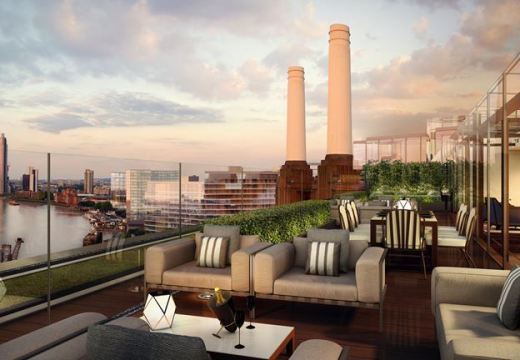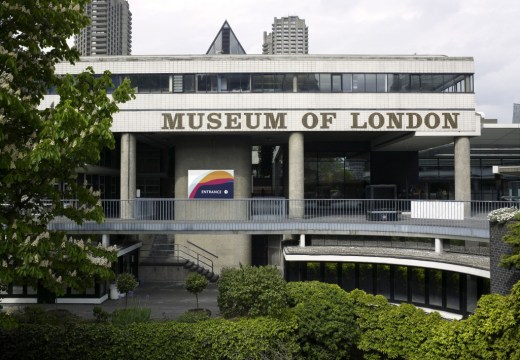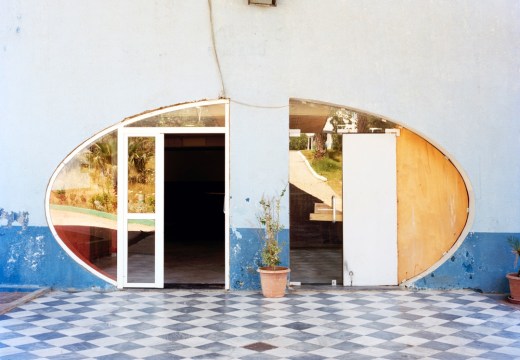With hundreds of new towers planned for London, the city’s skyline will change dramatically in coming decades. Are these buildings leaching the city’s history, or in keeping with its enterprising character?
No
Peter Murray
A letter to The Times recently began with the words ‘London wasn’t designed for tall buildings…’ True. London wasn’t designed at all. It just happened. London’s planning is the outcome of negotiation and pragmatism rather than a grand vision like many post-Renaissance European cities. Over the centuries the capital has responded to commercial, social and demographic pressures and adapted accordingly. The merchants of the City of London rejected Christopher Wren’s masterplan after the Great Fire, with its continental boulevards and vistas; instead, wanting to get back to business as soon as possible, they rebuilt their premises on existing sites, thus retaining the old medieval layout of the city. As London expanded, the surrounding towns, villages and estates gradually merged to create a vast and untidy metropolis. This pragmatic approach has been key to creating the varied character of London’s streets and places; this is the ‘city of villages’, or what former City of London chief planning officer Peter Rees calls ‘the greatest unplanned city in the world’. It is a character we should retain.
The 18th-century City of London had a jagged skyline, with warehouses and church spires jostling untidily together; St Paul’s Cathedral dominated everything, its huge mass out of scale with its surroundings. In almost every period of London’s growth, the scale of buildings has grown. In the 19th century, Richard Norman Shaw’s Albert Hall Mansions grew to a massive nine floors, ushering in the ever-popular mansion block.
Today London faces the prospect of a growth in population of 2.5 million people over the next quarter of a century. Accommodating these sorts of numbers within the constraints of the Green Belt will mean developing more densely, and this will inevitably lead to more tall buildings in selected locations. If we are unable to provide the accommodation and the workplaces for the burgeoning population, such failure will cause far greater damage to the city than a change of scale in the skyline. Westminster Council, for example, is currently updating its tall building policy because the borough has been losing office space in the face of the insatiable demand for housing, at a rate that dwarfs the development of the new offices which it needs in order to protect jobs.
For the last three years New London Architecture (NLA), an independent forum for architectural debate, has been tracking the number of towers which are either under construction or in the development pipeline in the capital. This year’s figures continued the upward trajectory, with some 436 tall buildings planned over 20 storeys. Most of these are located in clusters in one of the Greater London Authority’s 38 brownfield ‘Opportunity Areas’, which have significant capacity for development for housing or commercial use.
Although it will take a good 20 years to deliver all the proposed towers, they are having and will continue to have a significant impact on the look of the city, and their designs must be subject to keener scrutiny than less prominent structures. Well designed, well-proportioned tall buildings in the right place can enhance the skyline. Historic views of buildings like St Paul’s Cathedral and the Houses of Parliament are already protected from the intrusion of tall buildings. Outside those areas, the NLA has proposed that the London mayor commission a 3D-computer model of London that could be used by planners, developers and the public to ascertain the wider and local impact of tall buildings. The City of London has already created its own 3D-virtual model of the Square Mile’s eastern cluster of towers, which is proving an invaluable tool. Not only does it forecast the extent and form of the cluster and its impact on the skyline, it can also be used to study the effects of wind, the movement of people at ground level, and the loss of daylight. The NLA has also called on the mayor to create a Skyline Commission that could advise on both the design of individual buildings and the wider cityscape.
The look of London is changing because the city is growing. Good new buildings will not damage London; the failure to accommodate its growth will.
Peter Murray is chairman of the New London Architecture centre and of the London Society.
Yes
Gillian Darley
A wry observer of London has written that to be courageously modern, major new buildings must be out of all proportion to their neighbours, and notes that the skyline is ornamented with forms resembling ‘collapsed organ bellows, oval hat boxes or empty pergolas’. Astonishingly these were John Betjeman’s words, and they were published in the Daily Telegraph in the early 1950s.
More than 60 years on, Betjeman’s bellows conjure up Rafael Viñoly’s notorious Walkie Scorchie (the building fried a Jaguar parked below, before it was urgently adjusted) and the hat box suggests a slice of Foster and Partners’ Gherkin. ‘Empty pergolas’ might describe the residential towers proposed in Battersea, one pair laced together at roof height by a giddying suspended swimming pool.
In all of this it can be hard to discern between silky computer-generated images and reality, between sophisticated sales imagery (and sales speak, with its lexicon of inflated claims) and what will actually emerge from behind and above the hoardings. Take the Docklands Light Railway out to London City Airport and the route reveals a gargantuan explosion of development that is displacing almost every workplace or industrial site between the City and Canning Town. Hundreds more high-rise buildings are in the pipeline, everywhere in the capital.
Campaigns opposed to such developments focus on the height, location and numbers of the new towers – as well as the greater evil, the gross irresponsibility of allowing the property bubble to grow still further and dismantle the social order of the capital. But in aesthetic terms there is another worry, and that is what transpires at ground level. We Londoners are still attempting to live, work, travel and spend our leisure in the spaces between. Even the Shard, perhaps the single elegant new tower in the capital, but only so long as it remains solitary, offers an unrelenting groundscape: a stone platform interposed between transport intersections and that (off-limits) world of privilege – or lettable space – high overhead. In the City of London, for all the much mooted justifications of rooftop ‘public’ terraces or ‘roof gardens’ or permeable regions around the feet of new commercial towers, the reality is a series of paltry gaps between buildings that easily become wind tunnels, restricted (and policed) public rights of way, and the loss of more and more views in, or out of the City.
Elsewhere, in boroughs where planners are far less confident at exercising such of their powers that remain in a liberalising planning climate, the quality of ground-level London is evaporating fast. In Battersea, the new Embassy Quarter effectively walls off the Thames from south London, visually and physically. At Mount Pleasant (where the London mayor intervened over the heads of Camden and Islington, mayoral interdictions having become the order of the day), the open ‘park’ space is delineated as a gloomy, overshadowed gulch between a cluster of blocks.
But no single proposal is more oblivious to the architectural and historic fabric of existing London, than that currently proposed off the Mile End Road in the London Borough of Tower Hamlets. Sainsbury’s supermarket chain has submitted plans to develop the site of their existing megastore, just 80 metres from the exquisite Trinity Green Almshouses, a Grade 1 listed 1695 group of one-and-a-half storey cottages built for mariners and their widows. One tower, the one nearest to the diminutive group, is set to rise to 28 stories, another to 15. The massing and concept of the scheme is unrelievedly lumpen.
Trinity Green’s newer residents are the beneficiaries of the Right to Buy scheme, but a handful of cottages (and the common areas) are still owned by the council and in urgent need of its care and vigilance. It was at the forefront of the fight for statutory protection for historic buildings in the 1890s; C.R. Ashbee’s monograph on the almshouses launched what became the Survey of London – the continuing, internationally envied series chronicling London’s architectural history. If the development goes ahead, the long shadow of the proposed towers (regardless of architectural quality which, as it happens, is negligible in this case) will fall over the tiny red brick cottages with their protective chapel and proud gates like a predatory invader in a sci-fi film. What a grim metaphor for London in 2016.
Gillian Darley’s Return to Subtopia will be broadcast on 7 May on BBC Radio 4.
From the May issue of Apollo: preview and subscribe here
Unlimited access from just $16 every 3 months
Subscribe to get unlimited and exclusive access to the top art stories, interviews and exhibition reviews.














![Masterpiece [Re]discovery 2022. Photo: Ben Fisher Photography, courtesy of Masterpiece London](http://www.apollo-magazine.com/wp-content/uploads/2022/07/MPL2022_4263.jpg)
It’s time for the government of London to return to its rightful home